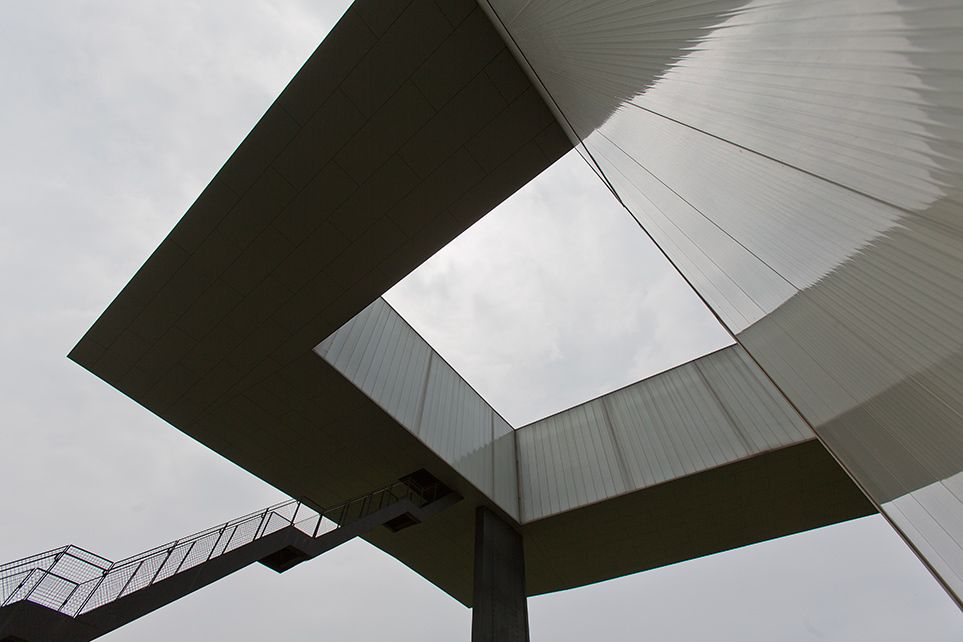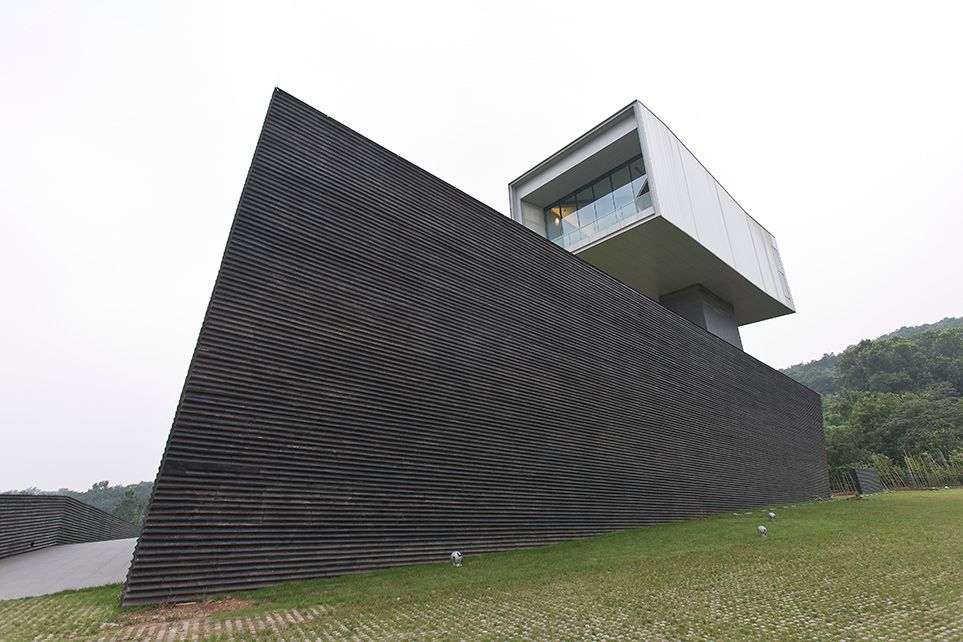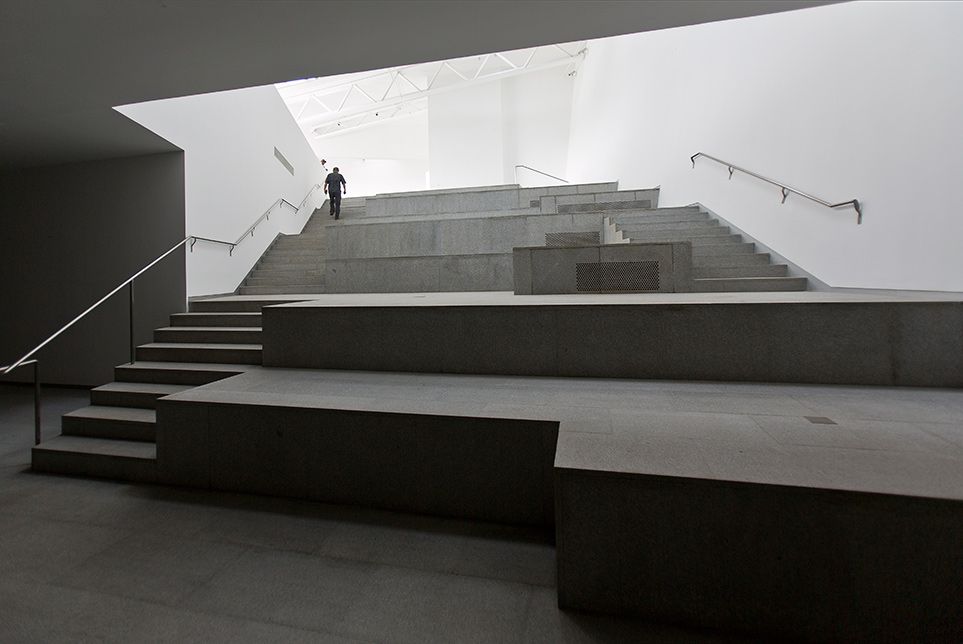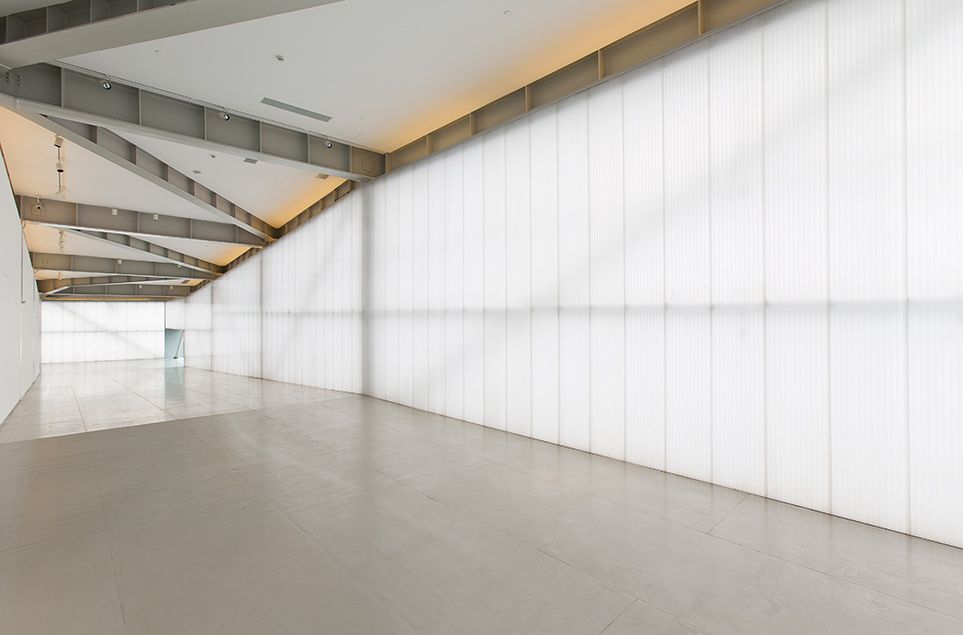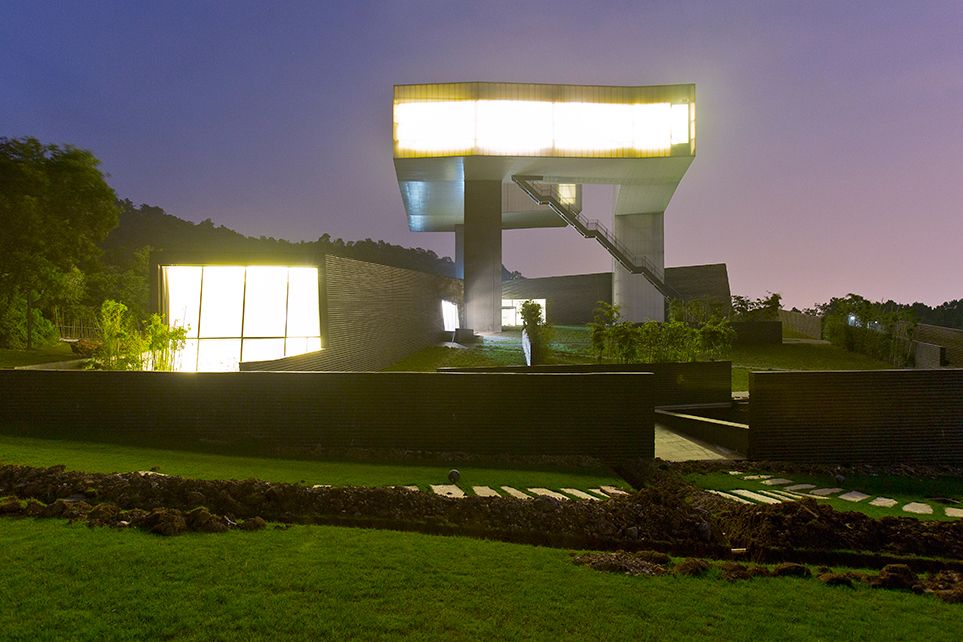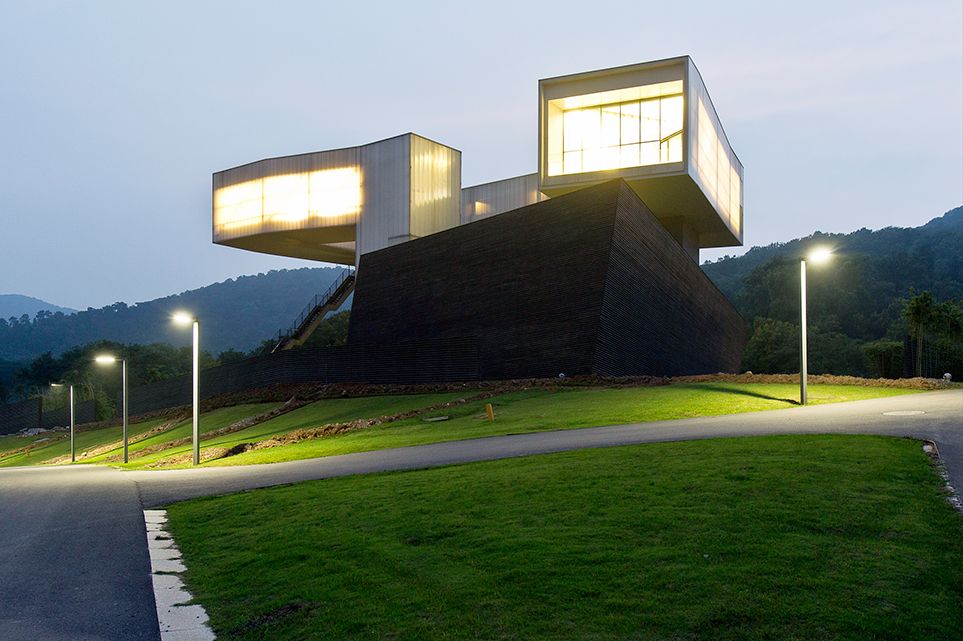Coming Soon: The Sifang Art Museum
A first look at the 15,000-square-foot space being built outside of Nanjing, China
Hard by the Yangtze River, ten miles from Nanjing, a giant, glowing hollowed-out trapezoid hovers above the trees. The otherworldly Sifang Art Museum, designed by the American architect Steven Holl, is set to open later this year, an edgy sign of the ancient city’s rapid modernization. The 15,000-square-foot museum, part of a planned complex of signature structures intended to put Nanjing on the art-world map, has two strikingly different levels. The lower one, with its plant-covered roof and black concrete walls, nestles into a hill by the river; inside are traditional white-walled galleries. Some 30 feet above—reached by an elevator or an outdoor stairway that would not be out of place dangling from a flying saucer—is a more futuristic space. A narrow room, enlivened by translucent polycarbonate paneling, makes three sharp turns but doesn’t meet up with itself. At the far end, an event space looks out across the river to Nanjing, whose skyline features the four-year-old, 1,480-foot Zifeng Tower, one of the world’s ten tallest skyscrapers. Holl says his design evokes the shifting viewpoints and parallel perspectives in Chinese paintings, and the gleaming white and stark black surfaces are a nod to the spare elegance of Chinese calligraphy. “All the color in the museum will come from the art on display—and from the people who visit,” says Holl.
